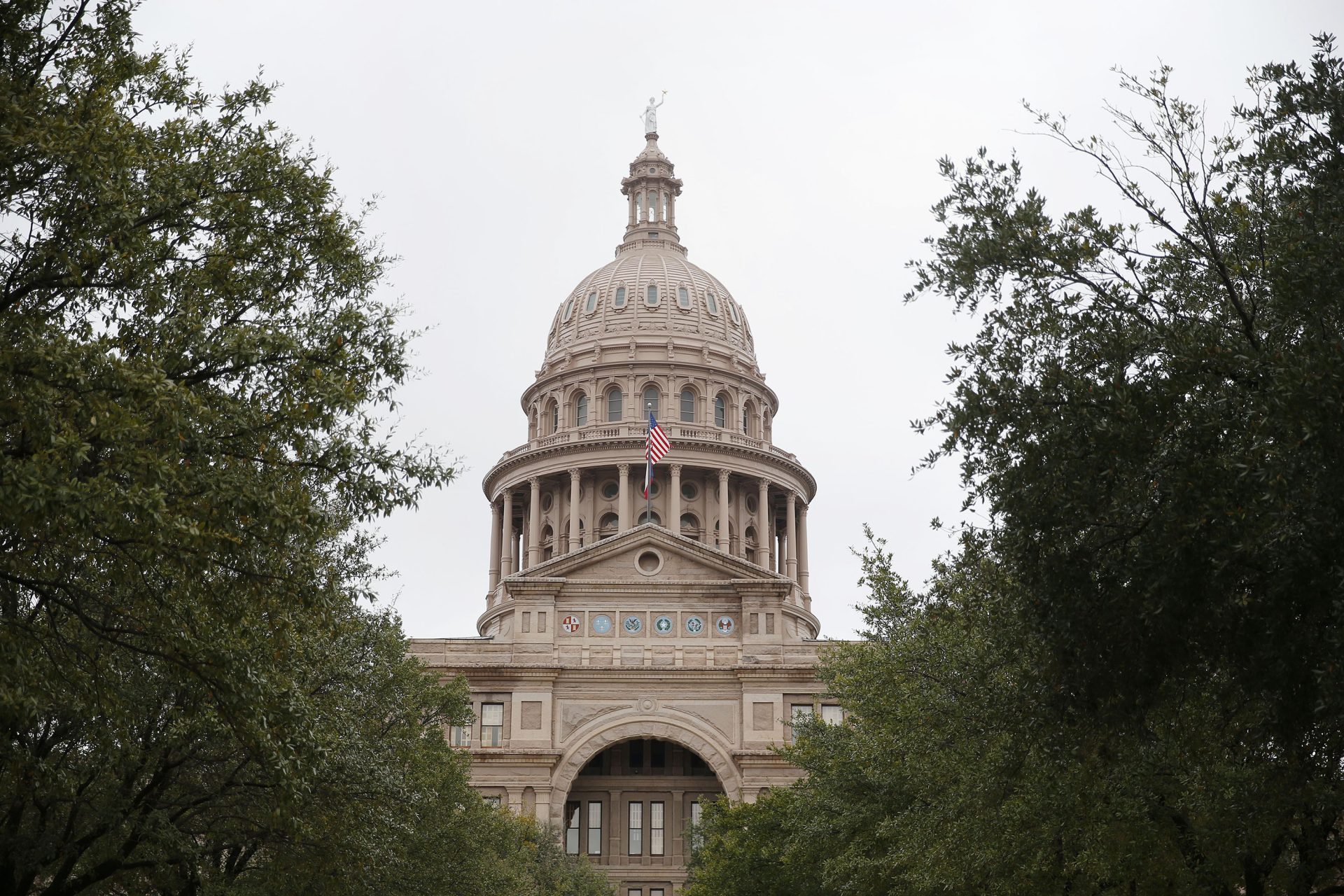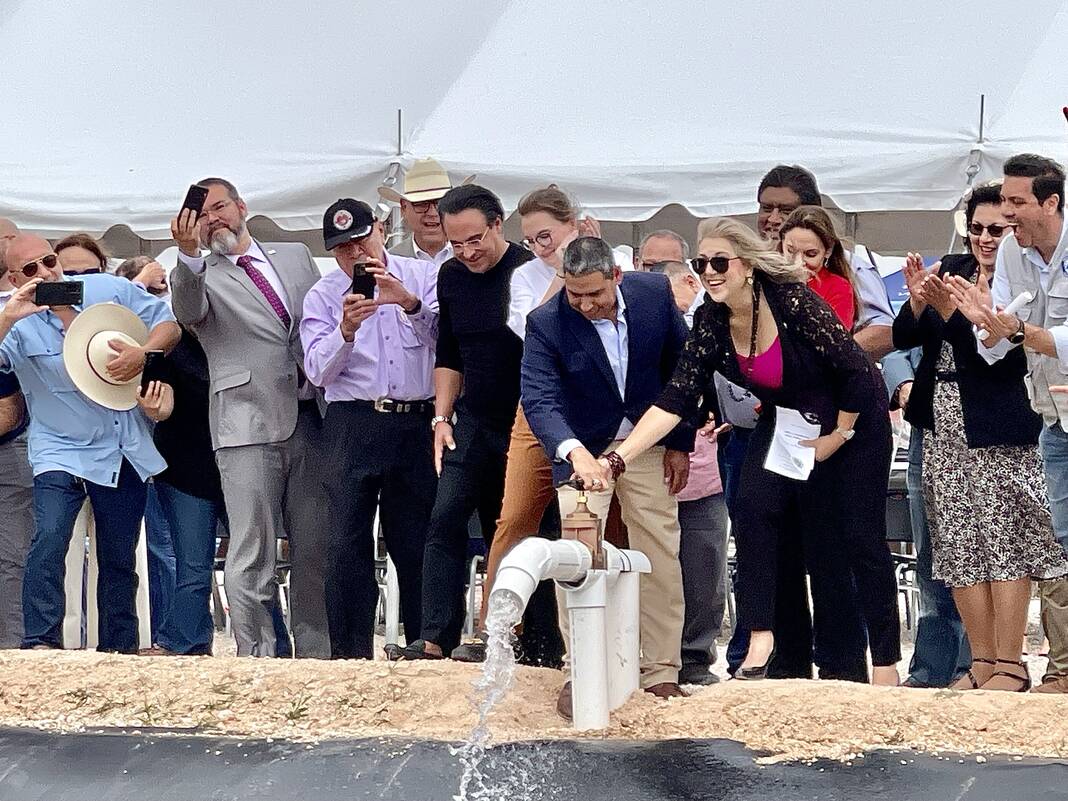WESLACO, Texas – With water now a top priority for the RGV, Hidalgo County Commissioner David Fuentes would like to push ahead with a reverse osmosis system that would clean rainwater and use it as potable water – but the project needs funding.
“It would be the first of its kind ever in the state of Texas,” Fuentes said, explaining that the system would be part of the long-awaited Delta Reclamation Project just north of La Villa. “It is one of our major projects,” he said.
Reverse osmosis is a water purification process that uses a semi-permeable membrane to separate water molecules from other substances.
Fuentes is a member of Hidalgo County Drainage District No. 1 (HCDD1), which has taken on the Delta Reclamation Project. He said that in order to move forward with the project, more funding and legislative help in Austin is needed.
 Hidalgo County Commissioner David Fuentes
Hidalgo County Commissioner David Fuentes“The challenge is that we (HCDD1) are not a water supply company. So, we’ve been working on trying to get the state to recognize us as a reclamation district, as a water district, so we can tap into some of the water development resources at the state level,” Fuentes said.
The Texas Water Development Board (TWDB) is impressed. Last year it presented HCDD1 with a “Rain Catcher” of the Year award for the Delta Reclamation Project. TWDB praised HCDD1 for “developing a new water supply source while mitigating flooding by capturing rainwater/stormwater on a regional scale.”
TWDB said this about the project:
“The Delta Reclamation Project collects rainwater/stormwater over a large area in northern Hidalgo County from hundreds of miles of drainage ditches and stores the captured water in a 100-acre detention pond.
“The project will provide flood control for the most populated areas of Hidalgo County and establish a treatment process to reclaim the water for municipal and irrigation use.
“The project is proposed to be constructed in three phases and includes an off-line stormwater detention pond and treatment facility.
“The project is currently piloting advanced treatment technologies, including micro-filtration and reverse-osmosis focused on treating the water to ensure its suitability for various end purposes such as drinking water.
“Utilizing a holistic approach to water management on a regional scale, the project reduces the reliance on traditional water sources, conserves valuable resources, minimizes the threat of flooding, promotes sustainable water management practices, and addresses water scarcity concerns in the region by providing an alternative water supply source.
“By showcasing the successful recapture and beneficial reuse of rainwater/stormwater, the project expects to set a precedence for sustainable practices and serve as a blueprint for other regions in the state.”
 The Main Drain watershed. (Photo credit: Texas Water Development Board).
The Main Drain watershed. (Photo credit: Texas Water Development Board).Not ranked highly enough
In an exclusive interview with the Rio Grande Guardian International News Service, Commissioner Fuentes spoke in depth about the Delta Reclamation Project and the challenges in getting it off the ground.
“The project started off as a flood mitigation project. It was started long before I came into office. But it just kind of stalled out and really wasn’t advancing. TCEQ had awarded the water rights to the county, the drainage district, saying, what’s in this system does belong to you, you can use it. But aside from that the project had not advanced maybe the way it should have.”
TCEQ stands for Texas Commission on Environmental Quality.
“We are creating a 225-acre detention facility in La Villa that’s going to capture flood water and rainwater. It is going to be attached to the Main Drain. It will be diverted from the Main Drain into the reclamation area. And just like other reclaimed projects, we’re trying to repurpose that water,” Fuentes explained.
The Main Drain captures flood water and rainwater from parts of northern Hidalgo County and deposits it into the Laguna Madre in Willacy County.
“The Main Drain has so much water in it on a daily basis, whether we’re in a drought situation, whether we’re in a rainy situation, there’s always water levels in that drain and we are creating a 225-acre detention facility in La Villa that’s going to capture this water,” Fuentes said.
“But what we’re doing is we’re actually putting in a reverse osmosis system to clean this water and use it as potable water.”
Fuentes said Hidalgo County used part of a 2018 bond issue to fund the flood mitigation component of the Delta Reclamation Project.
“And through our filtration systems and testing that we did, we finally got TCEQ to approve the testing protocol,” he said.
“We went through the testing period, and we are in the process of finalizing a report. We anticipate that when that report is finalized in May, that it will be submitted to TCEQ and I’m sure that there’ll be some back and forth and dialogue.”
The problem, Fuentes said, the reverse osmosis component “does not fit a normal brackish water, desalinization type project.”
He said: “We don’t fit into the general mold of a project that they usually approve and consider for an award. So, for us, we didn’t we didn’t rank very well even though we’re repurposing. It is a very green project. That is a benefit. It’s the first of its kind ever in the state of Texas.”
So, HCDD1 is having to be creative, Fuentes said.
“We’re having to create the rules as we go and it’s like, every time we cross one thing off our list, two or three more pop up. Another obstacle gets put in in front of us.”
But, the commissioner says, HCDD1 continues to educate state and federal officials on the merits of the project.
“We are asking them to keep pushing for this project because the drought that we’re going through right now is really highlighting the need for more water projects,” Fuentes said,
“It is projected that within the next 50 years the Valley is going to be short on water, we’re not going to have sufficient water to provide for all residents. So, we’re trying to meet that need by creating this water, potable water.”
Fuentes added: “But, even then we’re only part of the solution. We’re not the entire solution. But here we are… we’re already at some of our lowest levels in the reservoirs and water has now become a very important talking point walking into this legislative session. So, we are educating our representatives, our senators, on what this project is, what it would mean to the Valley, how it would provide additional water resources to an area that’s already in desperate need.”
 The Delta Reclamation Project. (Photo credit: Texas Water Development Board).
The Delta Reclamation Project. (Photo credit: Texas Water Development Board). The post Fuentes: Delta Reclamation Project includes plan to create potable water appeared first on Rio Grande Guardian.
 (2).png)
 2 weeks ago
35
2 weeks ago
35









 English (US)
English (US)